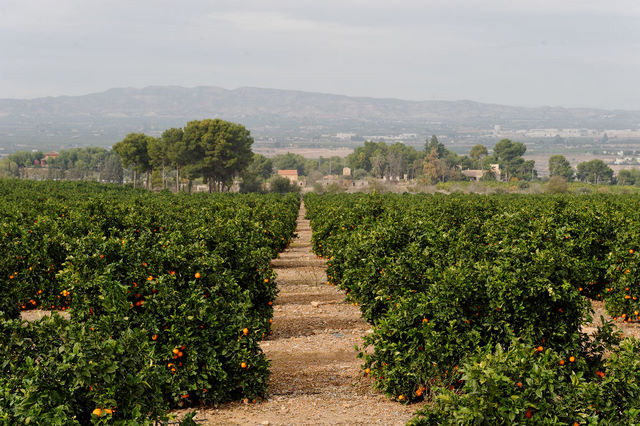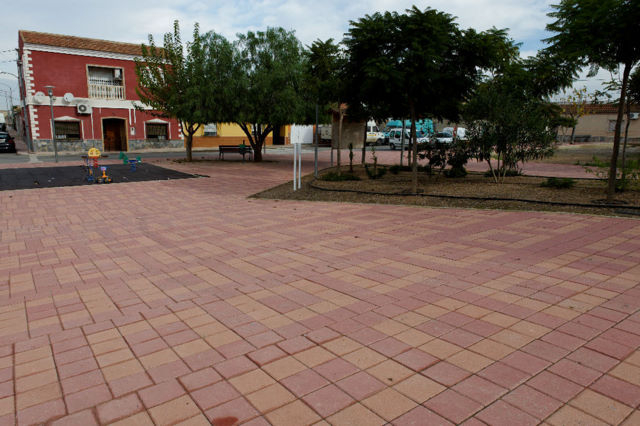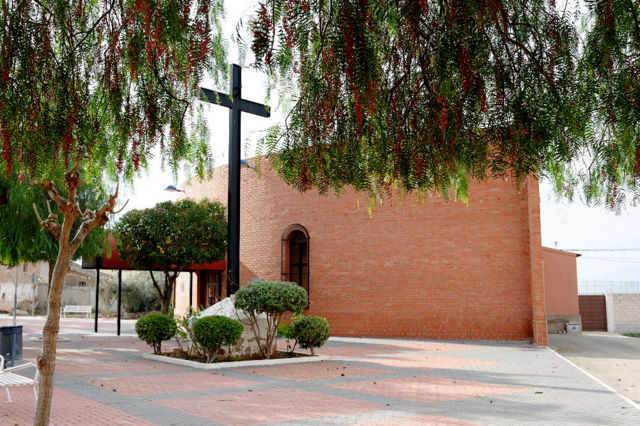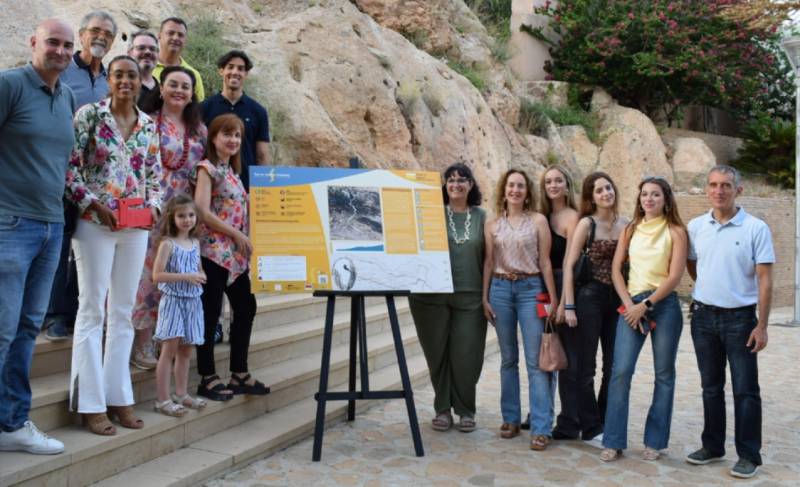Outlying districts of Alhama de Murcia, El Cañarico

A small village in the farmland between Alhama and the city of Murcia
El Cañarico is an agricultural district in the countryside of Alhama de Murcia, and is one of three clustered along the foothills of the Sierra de Carrascoy, the others being Las Cañadas and La Costera. It is in the north-east of Alhama, and shares boundaries with the municipalities of Librilla and Murcia.
It is presumed that the name of the village comes from the word "caña", meaning reed, which would tie in with the surrounding geographical features: there are various "ramblas" (natural run-off channels) from the mountains behind the village, and it is quite probable that a reed bed was the reason for the area becoming known by this name. In addition, the bed of the River Guadalentín also contains a lot of vegetation.

Originally the village of El Cañarico was just a farmhouse in the 19th century, but today it is worthy of being described as a village, with bars, a bakery, a social centre and a small church.
The main economic activity is agriculture, with most of the land dedicated to citrus fruit orchards, especially lemons. Recent decades have seen the transformation of many hectares as irrigation water was guaranteed by the completion of the Tajo-Segura supply canal canal in 1979, and nowadays the two varieties of lemon which are favoured in the area are the Fino, a winter variety with a high juice content, and the Verna, which is picked between the start of spring and September.
There are also significant chicken farming enterprises in the area, and alternative energy investments are producing a newer, cleaner crop, there being a number of solar installations set amongst the orchards.
Fiestas in El Cañarico

There are two annual fiestas in El Cañarico: the first is on the feast day of San Antonio de Padua (13th June), and the festivities take place around the church. Music and food are the two main elements, as well as the traditional procession of the figure of the saint through the streets of the village. In addition, there is a fiesta known locally as "Parques y Jardines", which takes place in August.
The highest part of the community, Pueblo Alto, has its own fiestas in August, also featuring live music and local gastronomic specialities.
History
The history of the three districts of El Cañarico, Las Cañadas and La Costera begins with evidence of early Argaric and Iberian settlements, which date from anywhere between 1800 BC to the arrival of the Romans in 209 BC, occupying the strategic outcrops above the fertile plains stretching out below.

Having taken Cartagena, the Romans moved in across what is now the Region of Murcia, with several archaeological sites in this valley showing evidence of agricultural villas which were dedicated to farming crops to feed the city of Cartagena and for export across the vast Roman Empire from the port.
The next culture of note in the area were the Moors, who farmed here from the 8th to the 13th centuries before being ousted by Christian settlers after the Reconquista. Belonging to this period, El Cañarico contains the remains of the Castillo de La Pita and the Torre del Cañarico: not much remains of these two buildings, but they are an important reminder of the necessity for fortified defensive towers under Moorish rule. They are hilltop fortifications dating from the 12th or 13th century, important not only to offer protection to the farmers living and working in the area, but also to exert control over the farmers and ensure that they paid their taxes.
After the area of Alhama was recovered from the Moors in the 13th century by the Crown of Castilla, the town was included in the administrative area of the Guadalentín valley, which required protection against the Moorish incursions from the neighbouring kingdom of Granada. This insecurity explains the proliferation of defensive towers throughout the landscape, forming a line of defence in conjunction with the towers in Librilla and Alhama.
Another archaeological site is located at Los Palacios, where the medieval remains suggest the possible existence of a Moorish palace in the area, dating from the time before the Christian reconquist in 1243.

Throughout the 13th and 14th centuries Alhama and El Cañarico changed hands between the Crowns of Castilla and Aragón, until on 25th November 1387, by decree of Juan I, they became the property of Alonso Yáñez Fajardo in recognition of his services to the crown of Castile. This was the beginning of a long period of rule by the Fajardo family (later the Marquises de los Vélez), many of whose internal disputes would affect the town.
It was not until the 19th century that Alhama was finally freed from the taxes imposed by the Fajardo family and was able to develop further, especially in the centre of the town itself. The status of "Villa de Realengo" was not re-acquired by the town until 1834, and after this the outlying areas such as El Cañarico were at last affected by the agricultural revolution and the introduction of new crops.
Click here for a history of the municipality of Alhama de Murcia.
Property in El Cañarico, La Costera and Las Cañadas

This area is intensely agricultural, mainly dedicated to producing citrus crops, so most properties are in the countryside and the population centres are very small.
There is little in the way of ex-pat support in these rural areas, and these three "pedanías" are on the fringes of the municipality of Alhama, almost as close to the shopping malls of Murcia as to Alhama! But for real, rural Spain, within a sensible distance of expat communities, the coast and the cities of Murcia, Lorca and Cartagena, outlying districts of Alhama are an interesting option.
For more local information in English about the municipality of Alhama de Murcia, including news and forthcoming events, visit Alhama Today.



 Welcome To
Welcome To Alhama de Murcia
Alhama de Murcia


 Welcome To
Welcome To Alhama de Murcia
Alhama de Murcia


 Welcome To
Welcome To Alhama de Murcia
Alhama de Murcia


 Welcome To
Welcome To Alhama de Murcia
Alhama de Murcia













